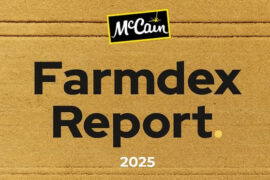Frozen food sales in the United States were up 21 percent in 2020 and, according to IRI, with some categories still outpacing 2020 sales. A recent study from Deloitte, meanwhile, points to perishability, price and preference as the three factors influencing consumers’ desire for frozen.
Perishability
The Deloitte report, entitled “Fresh vs. Frozen: The Future of Fresh in a Changing Competitive Landscape,” shows that 72 percent of consumers surveyed think about food waste and how much they throw away when making a purchase. Sixty percent agreed that fresh food’s shelf life has recently decreased and 45% agreed that more of the fresh food in their homes is going to waste than it did in past.
According to Deloitte: “The market for frozen food is less than half the size of fresh. Frozen is the David to fresh’s Goliath. However, frozen food sales were up 21% in 2020; basically double the growth of fresh food sales in that same period. Within frozen, the closest equivalents to fresh food (namely, a combined group of frozen meat, poultry, seafood, fruit, and vegetables) grew even faster and so far in 2021, frozen growth continues to outpace fresh. In the food fight to capture growth in at-home consumption, frozen appears to have gained an advantage.”

An overall positive image of frozen is reflected in consumer-stated preference data. In head-to-head comparisons, 40–50% of respondents said frozen is just as good or better than fresh. This preference is most pronounced among younger consumers, the same ones who would have grown up and started shopping on their own during a period of better frozen options and less stigma. Such a demographic difference may indicate a longer-term shift is underway, as these younger customers grow their families, economic standing, and purchasing power in the coming years.
Nutritional Journal Report
A separate study published in the Nutrition Journal shows that the average American consumer wastes about one pound of food every day and spends over $1,300 annually on food that ends up being wasted, or about $3.52 per day per year. More than 60 percent of the total wasted food is comprised of meat and seafood outside the home and fruits and vegetables within the home.
“Nothing matches the lifespan of frozen foods, and with that longevity comes the subsequent benefit of reduced food waste. Frozen foods can improve resource conservation, help feed a growing world and ensure more people have access to affordable, safe and nutritious foods,” said Alison Bodor, president and chief executive officer of the Arlington, Virginia-based American Frozen Food Institute (AFFI).
Price
Frozen foods are often lower in cost-per serving and have a longer shelf life than refrigerated or fresh foods.
“In this inflationary environment, consumers will be looking for ways to keep their food costs reasonable, and not throwing food away is an important start. There’s the price you pay and what you don’t throw away – a win-win for frozen,” said Bodor.
Preference
Frozen food also has gained on fresh as a matter of preference. In head-to-head comparisons, between 40% and 50% of consumers now see frozen food as just as good or better than so-called fresh food.
Bodor added: “It is delicious, nutritious and helps families meet their food and nutrition goals while ensuring they spend less over time.”
For more on frozen foods, go to FrozenAdvantage.org.






